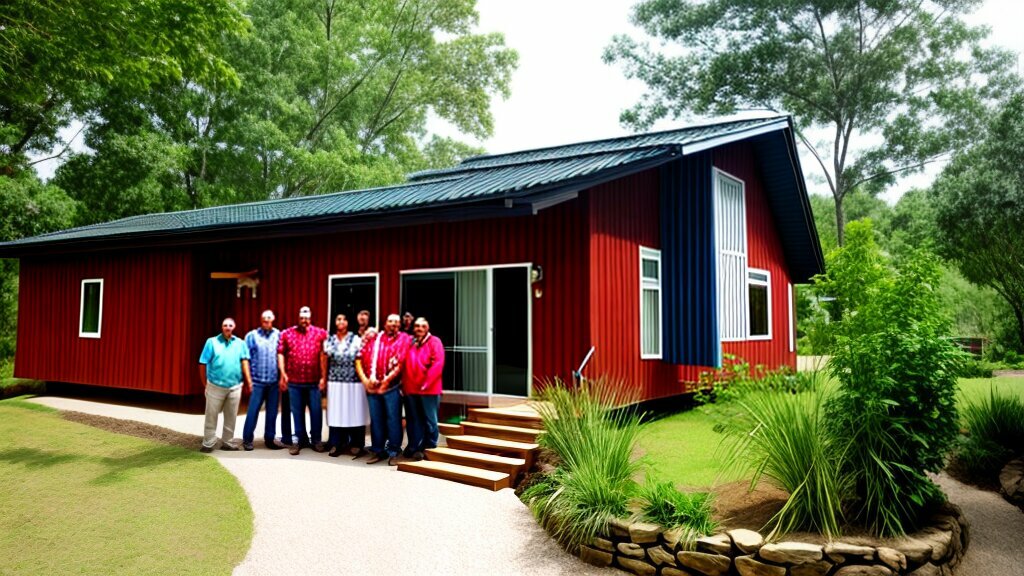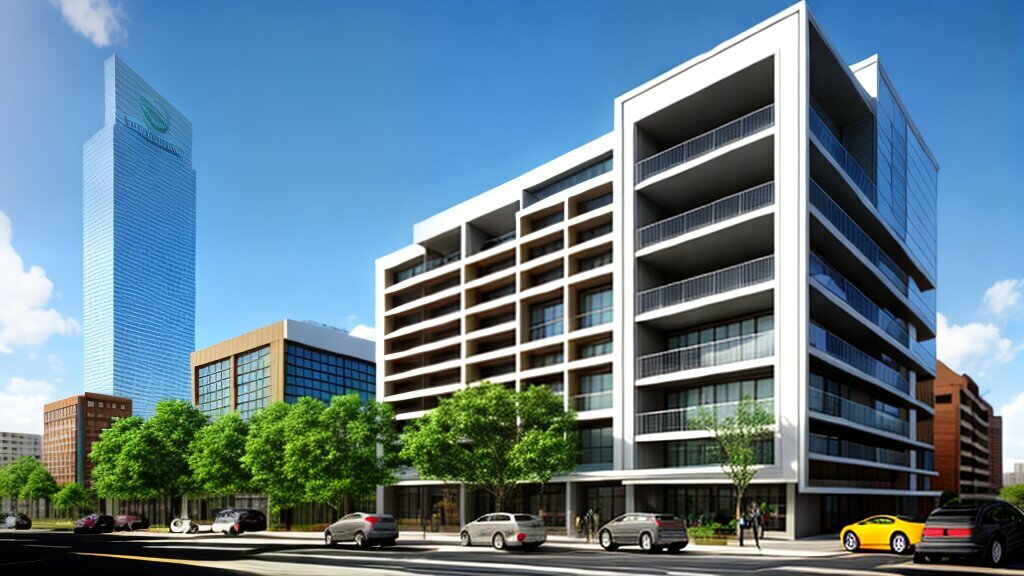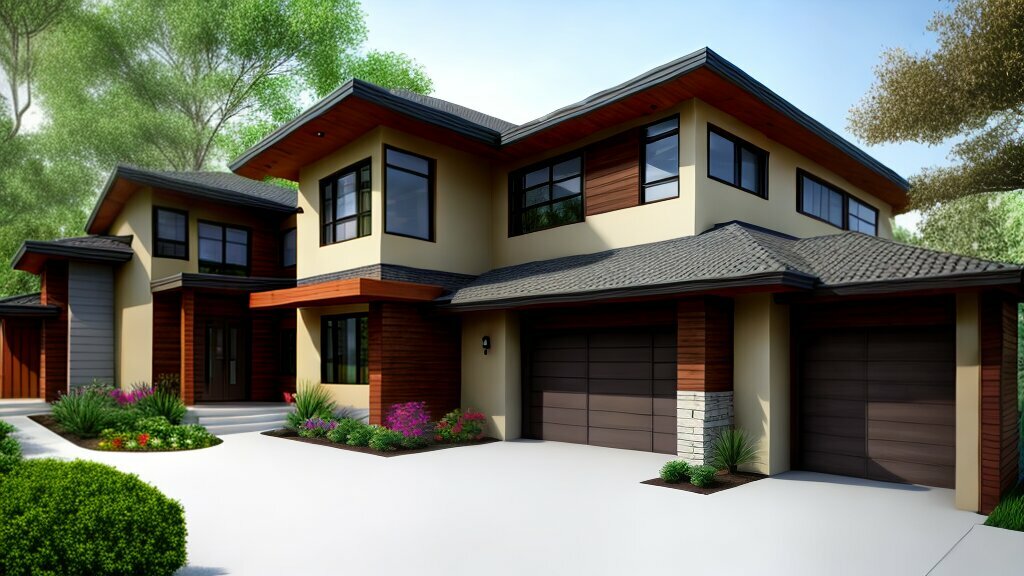Welcome to our article on Indigenous Architecture in Modern Contexts. The ways in which architecture can contribute to cultural preservation, environmental sustainability, and community empowerment in Indigenous contexts are at the forefront of contemporary architectural practices. In this article, we will explore the significance of Indigenous Architecture in Modern Contexts and how architects are combining traditional architectural practices with innovative design principles. We will look at how the integration of indigenous knowledge and cultural practices in modern architecture promotes sustainable development and preserves and promotes indigenous architectural identity, while addressing issues such as cultural appropriation and decolonized architectural practices.
Key Takeaways
- Indigenous Architecture in Modern Contexts emphasizes the importance of resilience and tradition in contemporary indigenous architectural practices.
- Contemporary Indigenous Architecture balances traditional architectural practices with innovative design principles to create unique and culturally relevant architectural designs.
- Architectural designs can contribute to cultural preservation, environmental sustainability, and community empowerment in Indigenous communities, promoting sustainable development.
- Integrating Indigenous knowledge and cultural practices in modern architecture preserves and promotes indigenous architectural identity.
- Architects should ethically engage with indigenous cultures, respecting their traditions and avoiding cultural appropriation in architectural design.
- Case studies of Indigenous Architecture in Modern Contexts demonstrate successful integration of indigenous design principles, sustainable development, and cultural preservation.
Contemporary Indigenous Architecture: Balancing Tradition and Innovation
Indigenous architecture is not just about preserving the past; it’s also about creating relevant and culturally significant designs for the present and future. In contemporary indigenous architecture, architects are pushing the boundaries by combining traditional practices with innovative design principles to create something truly unique.
The integration of indigenous design principles into modern architecture is creating a balance between tradition and innovation. Architects are drawing inspiration from indigenous cultures and incorporating design elements and materials that are specific to these cultures. By doing so, they are creating designs that not only reflect the indigenous identity but also connect with their communities at a deeper level.
The Importance of Indigenous Design Principles
Indigenous design principles are rooted in culture, tradition, and environment. They reflect the relationship between indigenous people and their surroundings and emphasize sustainability, functionality, and beauty in architectural design.
For example, the use of natural materials such as wood, stone, and earth is a common indigenous design principle. These materials are not only aesthetically beautiful but also environmentally sustainable, as they require less energy to produce and are biodegradable.
Incorporating indigenous design principles into modern architecture is not only important for preserving and promoting indigenous culture but also for creating sustainable and functional designs that are relevant in today’s world.
The Role of Innovation in Indigenous Architecture
Innovation plays a crucial role in contemporary indigenous architecture. It allows architects to push the boundaries and create designs that are not only culturally significant but also functional and sustainable.
For example, architects are using cutting-edge technology to create energy-efficient designs that reduce the carbon footprint. They are also incorporating modern techniques such as 3D printing to create intricate designs that were previously not possible.
By combining traditional practices with innovation, architects are creating designs that are relevant to the present and future while still maintaining the cultural significance of indigenous architecture.

“Indigenous architecture is about creating relevant and culturally significant designs for the present and future by combining traditional practices with innovative design principles.”
Sustainable Development in Indigenous Communities: The Role of Architecture
Indigenous communities are often at the forefront of combating environmental issues and promoting sustainable development. Architecture plays a crucial role in this effort, as it can contribute to cultural preservation, environmental sustainability, and community empowerment.
One of the key ways in which architecture can promote sustainable development is through the use of local materials and construction techniques. By using materials that are readily available in the community, architects can reduce the environmental impact of construction and support local economies. Additionally, traditional construction techniques can be adapted to modern building practices, resulting in structures that are both sustainable and culturally relevant.
| Example: |
One example of this is the use of adobe construction in Indigenous communities in the southwestern United States. Adobe is a sustainable material that has been used for centuries in this region, and its use in contemporary architecture helps to promote cultural continuity while reducing the environmental impact of construction. |
Furthermore, architectural designs can also contribute to community empowerment by incorporating community values and perspectives. Indigenous knowledge and cultural practices can be integrated into modern architectural design to create structures that reflect and celebrate the unique identity of the community.
For example, the Wapi Building in Lapwai, Idaho, was designed by Nez Perce architect Ryan Feddersen in collaboration with the community. The building incorporates traditional Nez Perce design elements, such as a longhouse-style roof, and serves as a space for community events and cultural education.

It is important to note that sustainable development in indigenous communities must also be approached with cultural preservation in mind. This means that architectural designs must not only reflect the cultural values and traditions of the community, but also actively support their preservation.
Architects must therefore work closely with the community they are designing for, taking into account their cultural practices and perspectives. This collaborative approach ensures that the resulting structures not only promote sustainable development but also foster cultural continuity and identity.
Integrating Indigenous Knowledge in Modern Architecture
Indigenous architecture is more than just a set of design principles. It is a reflection of cultural identity, spirituality, and history. It is an expression of the relationship between humans, the natural world, and the spiritual realm. Therefore, it is essential to preserve and promote indigenous architectural identity, as it represents the unique cultural heritage of indigenous communities.
One way to preserve this heritage is by integrating indigenous knowledge and cultural practices into modern architecture. Indigenous knowledge refers to the accumulated knowledge, skills, and expertise developed by indigenous communities over generations. It encompasses a wide range of fields, including agriculture, medicine, art, and architecture.
The integration of indigenous knowledge in modern architecture involves incorporating indigenous perspectives and values into the design process. This includes involving indigenous communities in all stages of the project, from planning to execution. By doing so, architects can create designs that are not only aesthetically and functionally sound but also culturally relevant and sustainable.
Integrating indigenous knowledge in modern architecture also involves a re-examination of traditional design principles. For example, traditional indigenous buildings were often constructed using locally-sourced materials and techniques that were adapted to the local climate and environment. By using these principles in modern architecture, architects can create buildings that are environmentally sustainable and energy-efficient.
Moreover, the integration of indigenous knowledge in modern architecture can help to address the issue of cultural appropriation. It encourages architects to ethically engage with indigenous cultures, respect their traditions, and avoid appropriation in architectural design.
Overall, integrating indigenous knowledge in modern architecture is an important step towards preserving and promoting indigenous architectural identity. By doing so, architects can create designs that are culturally relevant, sustainable, and respectful of indigenous traditions.

Addressing Cultural Appropriation in Indigenous Architecture
The issue of cultural appropriation is a complex and multifaceted one that plagues many fields, including architecture. In the context of indigenous architecture, cultural appropriation can take many forms, ranging from the use of sacred symbols and motifs without permission, to the co-opting of indigenous design principles without proper credit or recognition.
As architecture continues to globalize, it is important for architects to have a clear understanding of the ethical considerations surrounding the use of indigenous cultural practices and knowledge. To mitigate the risk of cultural appropriation, architects must engage with indigenous communities in a respectful and collaborative manner, seeking their guidance and input throughout the design process.
“Respectful and collaborative engagement with indigenous communities is essential to avoid cultural appropriation in architectural design.”
Architects must also recognize the diversity of indigenous cultures and the nuances of their design practices. This requires a deep understanding of the historical and cultural context of indigenous communities, as well as the willingness to learn from and listen to the perspectives of indigenous architects and designers.
Decolonized architectural practices, which reject the Eurocentric norms that dominate the industry and instead prioritize the perspectives and values of indigenous communities, are essential to addressing the issue of cultural appropriation in indigenous architecture. As more indigenous architects and designers gain recognition for their work, it is important for the architectural community to provide support and acknowledgement of their contributions.
By addressing the issue of cultural appropriation in indigenous architecture and prioritizing ethical and decolonized architectural practices, architects can ensure the preservation and promotion of indigenous architectural identity.

Case Studies: Examples of Indigenous Architecture in Modern Contexts
In this section, we will explore some inspiring examples of Indigenous architecture in modern contexts. These projects showcase the successful fusion of traditional architectural practices with contemporary design principles, resulting in unique and culturally significant designs.
Puukuokka Housing Block – Finland

The Puukuokka Housing Block, located in Finland, is a perfect example of how traditional Indigenous building practices can be incorporated into modern architecture. Designed by OOPEAA (Office for Peripheral Architecture), this innovative housing block uses cross-laminated timber and other sustainable materials to create a modern living space. The building design also incorporates traditional Finnish building practices and materials that pay homage to the local culture.
First Nations University – Canada

The First Nations University in Canada is another example of successful Indigenous architecture in modern contexts. Designed by Douglas Cardinal, a renowned Canadian architect of Métis and Blackfoot heritage, the university reflects traditional Indigenous values and culture. The building design incorporates circular shapes, natural materials, and bright colours, all of which are significant in Indigenous culture.
Sky City – New Mexico

Sky City, also known as Acoma Pueblo, is a unique Indigenous community located in New Mexico, USA. The buildings in this community are made of adobe and have been in use for over 800 years. Recently, the community has been working with architects and engineers to incorporate modern design principles and sustainable technologies into their traditional buildings. The result is a fusion of traditional and modern architecture that highlights the community’s resilience and commitment to preserving their culture.
These case studies demonstrate the importance of Indigenous architecture in modern contexts. By combining traditional practices with innovative design principles, architects and communities can create culturally significant buildings that promote sustainable development and cultural preservation.
Conclusion
Indigenous architecture in modern contexts is a critical area that promotes cultural preservation, sustainable development, and community empowerment. In this article, we explored various themes related to contemporary indigenous architecture and its significance in modern society.
Architects combining traditional practices with innovative design principles have created unique and culturally relevant architectural designs. Sustainable development in indigenous communities has been promoted through architectural designs that contribute to cultural preservation and environmental sustainability.
Integrating indigenous knowledge and cultural practices in modern architecture is essential for preserving and promoting indigenous architectural identity. Addressing cultural appropriation in architecture is essential, and architects must ethically engage with indigenous cultures and respect their traditions.
Continued support for indigenous architectural practices
Despite the challenges, indigenous architecture continues to make valuable contributions to modern society. It is crucial to continue advocating for the recognition of indigenous architectural practices, promoting the inclusion of indigenous perspectives and values in architectural design, and supporting indigenous architects in their work.
We have showcased several case studies of indigenous architecture in modern contexts that demonstrate the successful integration of indigenous design principles, sustainable development, and cultural preservation. These projects provide a blueprint for future architects looking to incorporate indigenous knowledge in their work.
Overall, indigenous architecture in modern contexts is a fascinating and critical area that needs more recognition and support in contemporary society. It is vital to recognise the value of resilience and tradition in architecture and continue to promote meaningful engagement with indigenous cultures and communities.
FAQ
Q: What is contemporary indigenous architecture?
A: Contemporary indigenous architecture refers to the practice of combining traditional architectural practices with innovative design principles in order to create culturally relevant and unique architectural designs.
Q: How does architecture contribute to sustainable development in indigenous communities?
A: Architecture plays a significant role in promoting sustainable development in indigenous communities by contributing to cultural preservation, environmental sustainability, and community empowerment.
Q: How is indigenous knowledge integrated into modern architecture?
A: Indigenous knowledge and cultural practices are being integrated into modern architecture to preserve and promote indigenous architectural identity. This integration highlights the importance of incorporating indigenous perspectives and values in architectural design.
Q: How can architects address cultural appropriation in indigenous architecture?
A: Architects can address cultural appropriation in indigenous architecture by engaging ethically with indigenous cultures, respecting their traditions, and avoiding appropriation in architectural design. Decolonized architectural practices are crucial to ensuring cultural respect and recognition.
Q: Can you provide examples of indigenous architecture in modern contexts?
A: Yes, several case studies showcase indigenous architecture in modern contexts. These examples demonstrate the successful integration of indigenous design principles, sustainable development, and cultural preservation.























Post comments (0)